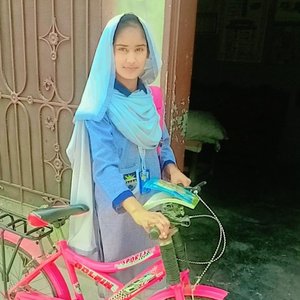Investigating the digital learning gap for girls in northern India
(Courtesy of Prashant Singh)
How patriarchal norms prevent girls from accessing mobile phones — and going to school.
When schools across India closed in March 2020 to limit the spread of COVID-19, the government in the northwestern state of Rajasthan rolled out the SMILE programme to help students learn from home. The initiative attempted to connect teachers with students over WhatsApp and received much fanfare — yet when I asked a group of girls in Bajju Tejpura village how they found digital learning, they said, “What online classes? We barely attended any.”
Policymakers around the world often celebrate digital learning as the future of education. Yet as I witnessed firsthand when speaking with girls in Rajasthan, there are often tremendous gaps between programme intention and reality. As studies show, one of the barriers preventing students from participating in digital and broadcast remote learning is lack of access to the required devices, particularly for girls.
“Policymakers around the world often celebrate digital learning as the future of education. Yet as I witnessed firsthand when speaking with girls in Rajasthan, there are often tremendous gaps between programme intention and reality.”
In western Rajasthan, patriarchal norms dictate that male members of societies need to closely supervise or restrict girls’ access to mobile phones. Many families believe that girls could access materials that would challenge their chastity through their phones. This excuse denies girls the opportunity to exercise their agency and continue their education.
The girls I spoke to in Bajju Tejpura village explained how their phone use is fraught with suspicion and gender discrimination. The girls shared, with slight hesitancy, some of the reasons their families told them they could not use a mobile phone: “I do not want you to be gossiping with your friends.” “Why do you even need a phone? I do not know the kind of people you would be speaking with and I cannot keep vigilance on you always.” “Your brother has a phone. Whenever you need to take online classes you could borrow his phone.”
A student in Bajju Tejpura village named Priyanka* told me that she knew about the SMILE programme and wanted to continue her lessons from home. “Our teachers share lessons and homework on WhatsApp. My brother owns a smartphone but he refuses to share it with me,” she said. “It is not as if he needs it to finish some work. He uses his smartphone to play PUBG [PlayerUnknown's Battlegrounds] and other silly games.” I asked her how that made her feel and Priyanka responded, “How would it make anyone feel? I know that neither my family nor my brother cares about my learning getting suffered. I have friends who use their father’s phone for keeping up with my school work. But I cannot change things.”
Despite these challenges, Priyanka wants to find a way to complete her education. “I know that I cannot let the absence of a smartphone deter my goals of completing my schooling,” she explained. Earlier this year, the Rajasthan government announced the resumption of in-person classes for students from IX–XII and final year university students. Priyanka is optimistic about her education once it’s safe for schools to reopen, sharing, “I hope I can get up to speed.”
Aastha Maggu supports the knowledge, advocacy and outreach efforts of Desert Resource Centre, Urmul group. (Courtesy of Aastha Maggu)
Right now, India is facing an exponential rise in COVID-19 case numbers during a second wave of the pandemic that is quickly spreading to the rural areas. In May, Rajasthan witnessed a spike in cases in its rural areas. The health infrastructure in these communities is not equipped to manage the caseload and it could take months for the schools to reopen. To ensure that girls do not lose out on any more learning during this academic year, governments must encourage the adoption of digital education solutions as well as promote social and behavioral change so that girls can freely access technology.
To address the social norms limiting girls’ access, the state and federal governments need to work with panchayati raj institutions (rural local self-government institutes) as they have the resources and network to closely work at the grassroots level. Government institutions and civil society organisations must actively engage parents and community elders in discussions about digital education and its merits. Once lockdown restrictions are lifted, they could offer demonstrations of how the digital devices function or invite parents and community elders to witness a class in the schools in order to alleviate their fears. We need to keep the doors open for them so that they can freely voice their concerns. It is only through continuous and sincere dialogues that we can demystify the perceived threats of digital education. If the digital education revolution is to succeed, the change needs to be organic and start at the community level.
*Indicates a pseudonym.
Thank you to Prashant Singh and Manoj Kanwar from Urmul for their input on this article.
 Read more
Read more













